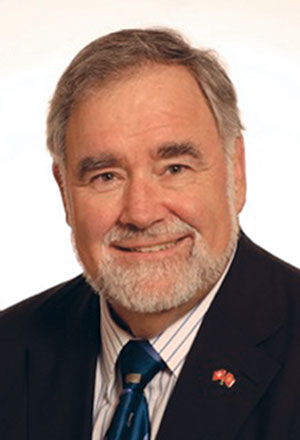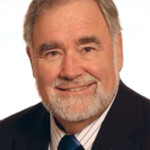Professor Niklaus P. Lang discusses the struggles of peri-implantitis, research surrounding biomaterials, and treatment protocols
 How has the incidence of peri-implantitis changed over the last 10 years?
How has the incidence of peri-implantitis changed over the last 10 years?
The incidence of new cases is, of course, dependent on the sales of dental implants, which have increased tremendously over the last 10 years. Consequently, we are placing more than a million implants worldwide each year, so the incidence of peri-implantitis will only increase.
What is the likelihood of the chances of an implant experiencing peri-implantitis within 10 years?
Based on a systematic review, it will affect 10% of the implants and 20% of the patients — so every fifth patient will experience peri-implantitis within 10 years of their having an implant placed. This is unlikely to change unless we do something very specific regarding the maintenance of implants.
Do you have a preferred approach for the treatment of peri-implantitis?
Definitely, yes: the cumulative interceptive supportive therapy (CIST) protocol. It starts as a maintenance program, and depending on the degree of pathology, additional therapies are added. This begins with mechanical debridement, then moves to antiseptic cleaning and to antibiotics, and finally to the surgical approach — which is why it is called a cumulative therapy.
So we may do A; then if it’s more advanced, we will do A and B, then A, B, and C, and so on. So, you would only undertake a surgical approach once the initial phases have been completed, which are designed to eliminate the infection.
Only then can you expect an optimal outcome of regenerative therapy.
This whole system has been validated over the last 10 years in single studies, and there is now one prospective cohort study that includes all of the four steps of the CIST protocol. We have randomized controlled trials of single steps of the protocols, but not all four.
What is your experience of using biomaterials as a part of the treatment process?
There is an indication for using biomaterials as part of the CIST protocol. This comes once we have a disinfected area, and we would like to either level the lesions, so we can have access for cleansing in the future, or if the defect is self-contained, to regenerate it.
I ask for three features from a bio-material: The first is biocompatibility. Second, it must be osteoconductive. I don’t ask for osteoinduction because this arises from the limits of the defect; hence, in a self-contained defect, the biomaterial provides the scaffold, and this is very predictable. And the third feature is that it resorbs when it needs to but is replaced slowly.
Through osteoconduction I would expect that bone would grow along with the bone graft particles and get in close contact with the implant, so there is some reosseointegration. This has been demonstrated in a study, but a moderately rough surface is required.
Based on your own experiences, what are the main causes/risk factors for peri-implantitis?
There are very well-documented factors that increase the risk of peri-implantitis enormously.
First: oral hygiene. A lot of people expect a lousy standard of oral hygiene and say, “Well, my patients just don’t clean better!” In my mind, if they don’t clean better, they don’t deserve high-end dentistry.
The optimal level of oral hygiene, below which you can expect peri-implantitis, is not known, but it’s clear that when you have only 10% of sites displaying plaque, then it’s under control.
The second factor is patient compliance, not only with oral hygiene, but they must comply with the schedule of follow-up visits; the implant is, after all, a high-maintenance device, like a fancy car!
Third is provision of a maintenance system. A lot of surgeons place the implant, send the bill, and that’s it! Maintenance is crucial; studies show that without maintenance, prevalence is up from 10% to 40%. A structured maintenance system, during which you perform diagnosis, looking first for peri-implant mucositis, followed by appropriate treatment, is crucial.
The fourth factor is that periodontal treatment must have been completed successfully as these patients have tremendous reservoirs for pathogenic bacteria, which can jump over and feed into the peri-implant sulcus. We have shown in studies that the more residual pockets patients have, the greater the chance they have of developing peri-implantitis.
The goal is to have a patient with good oral hygiene, who is compliant and who has been successfully treated for periodontitis.
The final factor is that the prosthetic appliance must be cleansable and accessible to cleaning devices. If I was giving a talk on how to avoid peri-implantitis, these are the five factors that I would put my money on.
In my mind, if patients don’t
clean better, they don’t deserve
high-end dentistry
 Does peri-implantitis threaten to reduce the use of dental implants as a treatment option?
Does peri-implantitis threaten to reduce the use of dental implants as a treatment option?
The answer is a philosophical one — no, but maybe it should.
Dentists will cope with peri-implantitis, or refer to another dentist, but they will not stop doing implants because implants bring them money! Good teeth that could be maintained are extracted these days, and this really has to do with ethics — which are not always at the highest premium in dentistry.
It takes a while to develop peri-implantitis, maybe 5 to 10 years, during which time the dentist possibly has sold his/her practice, and someone else has to take care of it.
Can you outline your own research in the area of peri-implantitis?
I have worked on between 50 and 100 publications dealing with the topic, covering etiology, pathogenesis, diagnosis, and therapy of peri-implantitis.
In Berne, we were the first group to look at the etiology and microbiology in 1987/1988 and have been doing so ever since. The most recent microbiological study was from 2014 and took place in Hong Kong with patients recruited from Shanghai. We were able to get people who had a healthy and diseased implant and a healthy and diseased tooth all in one mouth. It took us 3 years to recruit 27 cases. This study used the most modern microbiological diversity and molecular techniques, but peri-implantitis has been on my menu since 1986.
You recently spoke on the topic in London — what did delegates take away from this lecture?
Hopefully, I conveyed the principle of diagnosis, so that when you place an implant, you know how to diagnose it in the future — not by taking a radiograph every couple of years but by probing.
We also had consensus statements from the European Workshop on Perio-dontology 2012 where we discussed the monitoring of implants in great detail. It is a simple principle, but it has to be done! I also discussed the diagnosis and concept of maintenance.
Stay Relevant With Implant Practice US
Join our email list for CE courses and webinars, articles and mores

 Professor Niklaus P. Lang, DDS, MS, PhD, Dr Odont HC Mult Hon FRCPS (Glasgow), received his dental degree at the University of Berne in 1968 and his DrMedDent in 1970. After obtaining a master of science in periodontology from the University of Michigan, he returned to the University of Berne to earn his PhD in 1978. He is currently professor of implant dentistry at the University of Hong Kong in the area of oral rehabilitation. He has written numerous publications and spoken all around the world and is the former president of the International Team of Implantology (ITI). He is editor-in-chief of the journal, Clinical Oral Implants Research, and continually participates in clinical research.
Professor Niklaus P. Lang, DDS, MS, PhD, Dr Odont HC Mult Hon FRCPS (Glasgow), received his dental degree at the University of Berne in 1968 and his DrMedDent in 1970. After obtaining a master of science in periodontology from the University of Michigan, he returned to the University of Berne to earn his PhD in 1978. He is currently professor of implant dentistry at the University of Hong Kong in the area of oral rehabilitation. He has written numerous publications and spoken all around the world and is the former president of the International Team of Implantology (ITI). He is editor-in-chief of the journal, Clinical Oral Implants Research, and continually participates in clinical research.
